After a bone-dry June, July did bring some rain, which soon petered out and gave way to more hot and dry conditions. The drought led to naturally low water levels at Willen, exposing large areas of mud. And for the first time in many years, north Bucks birders were able to actually enjoy some wader passage instead of just reading about it happening elsewhere.
The best wader though was a Spotted Redshank at Amersham on August 21st. Like our other Spotshank earlier in the year, it didn’t stay long and eluded the masses.
To counter that gloom though, the new floods at Amersham offer some hope. And as usual with newly created wetlands, they soon proved attractive to an excellent range of species, as you will soon read. Birds always find good habitat.
The rarest wader of the period was the Spotted Redshank at Eythrope on March 30th, an excellent patch bird and the first in the county for four years. Indeed, there have only been four records of this elegant bird in Bucks since 2017. A Wood Sandpiper was a good find at Amersham on April 26th. A Ruff was at Amersham on April 10th, with another at Gallows Bridge on April 4th. Ringed Plover is far rarer in Bucks now than it used to be, and just the single record this Spring – one at Rowsham on April 15th – bears this out.
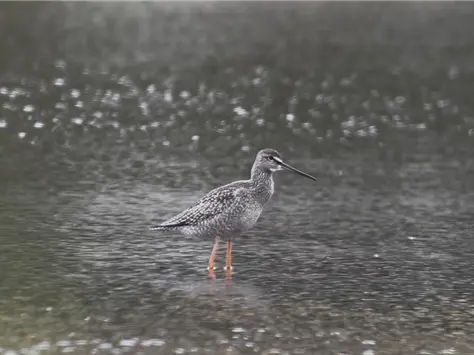
The only Dunlin of the period was at Willen from 24th-27th. This used to be one of our commonest passage waders, but no longer. There were only two Ringed Plovers seen, singles at Foxcote on July 6th and College Lake on August 27th.
There was a nice scattering of Black-tailed Godwits, with 7 at Little Marlow GP and one at Foxcote on July 6th, and up to 3 at Dorney Common from 22nd-26th of the same month. Two more were at Little Marlow GP on August 11th, with 3 at Willen on 16th.
There were just five reports of Redshank in July, with 3 at Foxcote the biggest count. There were no reports from August. 50 Golden Plover at Wingrave on July 29th were a little early, but a nice reminder of what to expect in the winter.
A juvenile Shag at Startops on August 29th was technically the rarest bird of the period, it being the first in Bucks since 2019 (a bird which also spent time flitting across county borders at one of the Tring reservoirs).

July and August aren’t usually the months to expect Bitterns in Bucks, although there have been a few mid-summer records in the past. So singles at Weston Turville on July 10th, and Willen and Calvert both on August 12th, were a nice surprise.
Cattle Egrets were at Little Marlow GP on July 8th, Wotton Lakes on July 17th (2), and Dorney Lake from July 30th-August 8th. Great White Egrets were seen at FFNR, Linford, Wotton Lakes, Willen, Gayhurst Quarry, Calvert & Great Brickhill.
It was a quiet time for raptors and wildfowl. A Garganey arrived at Willen on August 31st, only our second record of the year. A female Red-crested Pochard at College Lake on August 25th was the only other duck of note.
We’re seeing more Marsh Harriers in Bucks in recent years, and August is a good month to catch up with passage birds. There were females at Gallows Bridge on 12th and Calvert on 27th-28th, plus a juvenile at Foxcote on 19th. Hobby was reported from nine sites in July and an excellent 22 sites in August, with breeding suspected at three of those sites.
An adult Little Gull was at Little Marlow GP from August 27th-29th. There were Mediterranean Gulls at College Lake (1 on July 5th), Ashland MK (1 adult on July 16th), and Little Marlow GP (a juvenile on August 7th & 11th).
The only Caspian Gull of the period was a first-winter bird at Leckhampstead Wharf on August 12th.
In contrast, there were plenty of Yellow-legged Gulls, which is a reversal in trend of recent late summers. At least 3 individuals visited Little Marlow GP between July 5th-August 27th, and there were 5 at Springfield on July 18th, 2 at Hardmead on August 26th, and 1 at Leckhampstead Wharf on August 28th.
The biggest counts of Common Terns came from our breeding sites – 45 at Willen, 30 at Little Marlow GP, and 21 at College Lake, all flocks being a mix of adults and juveniles. The only rarer tern was a juvenile Black Tern at Foxcote on July 20th.
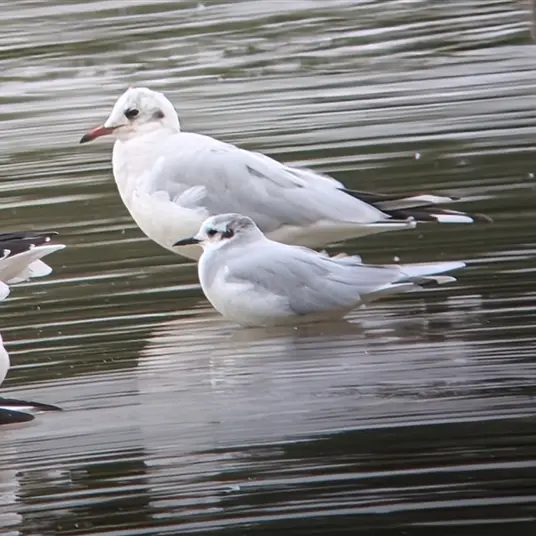
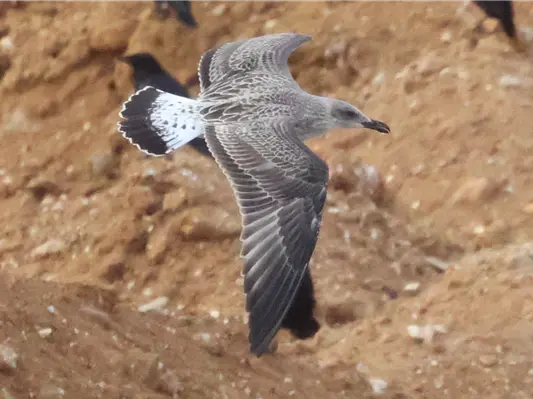
A juvenile Cuckoo at Foxcote on July 19th is currently the last reported bird of 2025. Swifts were widely reported in July, with the best counts being 60 at Willen, 45 at Buckingham, 36 at Foxcote, and 31 at Stony Stratford. There were, as expected, fewer about in August, with 22 at Willen being the biggest count.
A female Pied Flycatcher turned up at Quainton Hill on July 28th. Around this time there was a pretty sizeable influx of Pied Flys into southern and eastern England, so although we got one, perhaps we could have expected a few more.
In contrast, it’s been a decent autumn so far for the three flagship migrant chats – Redstart, Whinchat, and Wheatear. These perennially popular species can turn up anywhere and are always a joy to see on the local patch.
Starting with Wheatear, the only July report was a very early juvenile at Ivinghoe Beacon on 14th. We had to wait a few weeks for the next bird, one at Rowsham from August 6th-8th. After a notable push from 24th, the final tally for August was a minimum of 44 birds at 16 sites, most of which were in or south of the Chilterns. There were very few in the north. Site maxima were 4 at both Ivinghoe Beacon and Lodge Hill, with 1s and 2s elsewhere.
The first Whinchats were 2 at Pitstone Hill on August 10th, after which new birds turned up regularly until the month’s end. The final total was a minimum of 45 birds at 14 sites. Once again there was a heavy bias towards sites in and south of the Chiltern ridge. Site maxima were 4 at Ivinghoe Beacon, Stokenchurch, and Lodge Hill, and 3 at Jennings Farm and Pitstone Hill. The only northern bird was one at Willen on August 20th.
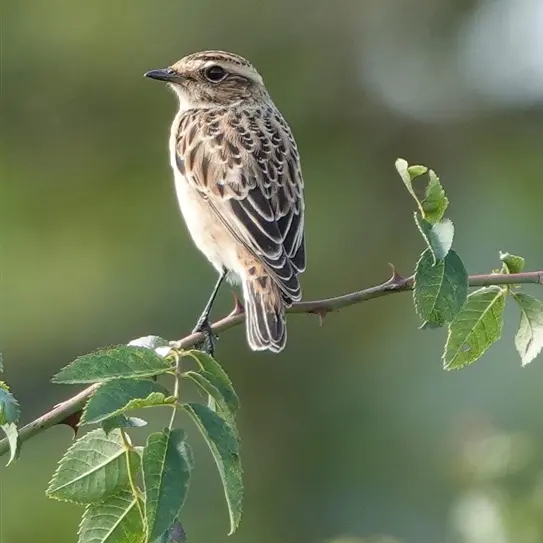

Of course, Redstarts have been with us since late June. More arrived in July, and the pace really picked up in August. It’s very difficult to estimate numbers, simply because of the incredible turnover at our main site of Rowsham. Some birds stayed here for weeks, others for a day or two. In July the peak count here was a superb 13 on 25th. In August the peak count was 11 on 9th. But birds were pretty much continuously present throughout both months.
In total, Redstarts were reported from 16 sites in July and August, and even north Bucks saw some action. Away from Rowsham, site maxima included 4 at Quainton Hill, and 3 at Grangelands and Whitchurch.
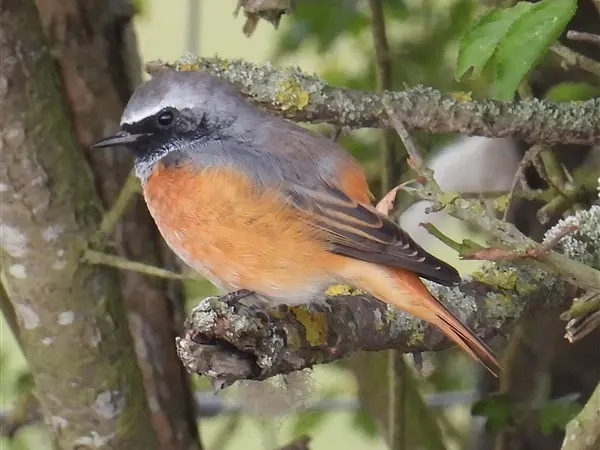

Nine Tree Pipits at seven sites is a reasonable return, but a long way short of the bumper years 2019 and 2020. Singles were recorded flying over Great Brickhill, Lodge Hill, Rowsham (on two dates), Stokenchurch, Tattenhoe, and Amersham, and 2 flew over Buckingham together.
There weren’t many double-figure flocks of Yellow Wagtail seen, with 30 at Buckingham, 20 at Wingrave, and 15 at Rowsham being the best counts. Spotted Flycatchers were seen at a healthy 27 sites, which is to be expected as autumn migration picks up pace. The highest counts were 6 at Stowe and 4 at Rushmere Park.
A Grasshopper Warbler at Olney on July 5th was the only one reported. After an encouraging early Spring, sightings rather petered out and there was a very limited summer presence.
We’ll finish with a species which seemed to be everywhere in July and August - Crossbills. They were reported from 14 sites in total, with some very impressive flocks seen, for example up to 180 at Great Hampden in late August, 80 at Wendover Woods in early July, and 70 at Grangelands in late July. There were also good numbers in the Brickhill Woods to keep north Bucks birders happy. Obvious migrants were also seen at sites such as Willen, Rowsham, and Little Marlow GP.
